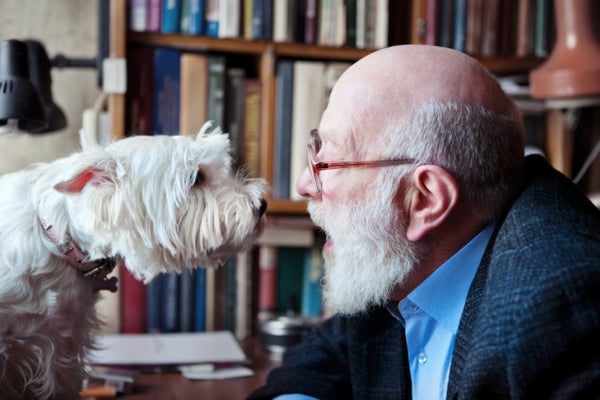Just like many of our readers, Scientific American editors love our dogs, cats and other pets (just try to stop us from sharing cute photographs). We also enjoy learning about why they do the funny things they do or how they settled into their domestic selves from their wild ancestors. Here’s a look at what science dug up about our furry companions this year.
How Dogs Learned to Chill Out and Love Humans
Just how dogs became such a constant companion to humans is something scientists are still trying to work out. But researchers this year added an interesting clue: dog breeds considered to be less closely related to their wolf ancestors have genetic changes that seem to lower their stress levels around humans. A proto-Fido that was less cautious around humans would have been more likely to begin to develop the social-cognitive skills necessary for human-dog bonding. That was the first step toward your favorite snuggly pup.
On supporting science journalism
If you're enjoying this article, consider supporting our award-winning journalism by subscribing. By purchasing a subscription you are helping to ensure the future of impactful stories about the discoveries and ideas shaping our world today.
Big Dog, Small Dog
Dogs famously come in a range of sizes, from the tiny chihuahua to the hulking Great Dane. But scientists have been unable to pin down the genetic reasons for such a size span—that is, until this year, when they announced a genetic variant that seems to be behind the breadth of canine sizes and that surprisingly traces back to ancient wolves.
Justice for Kitties!
Dogs get all the credit as humans’ best friend, but cats can form just as strong a bond with their bipedal caretakers. Signs that your feline friend is bonded to you include scenting by rubbing their head on you, showing their belly, blinking and letting you get close.
Puppy Dog Eyes Are Real
Any dog owner knows how nice it is to come home to a wiggly, waggy pup who is happy to see their human. But new research shows dogs reunited with their people also tear up—seemingly stimulated by the hormone oxytocin—which makes humans want to cuddle and care for them even more.
Why Sheepdogs Herd and Pointers Point
The 350-plus dog breeds that exist today are each associated with certain stereotypical behavioral traits—sheepdogs herd, certain hounds sniff out scents, and so on. For a new study out this year, researchers combed the deep ancestral relationships among breeds, as well as dog genomes and behavioral data, to show how certain genes are linked to particular behaviors. For example, in the sheepdog lineage, certain coding regions of the genome affect how neurons in the brain connect to one another, which can affect behavior. It’s something to ponder the next time your border collie or German shepherd tries to herd you around the house.
Dogs “Speak” Our Language
Sit, stay, roll over—we often teach dogs to obey verbal commands. But how much of human language do they understand? And do they perceive words differently from other sounds? Research this year suggests that they do and that dogs can differentiate Spanish from Hungarian from total gibberish. Good dog!
